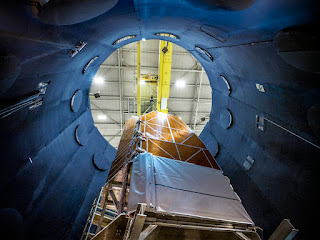Critical design work for the NASA Nancy Grace Roman Space Telescope has been completed, and the design analysis has also been successfully completed, indicating that all design and developmental engineering work is now complete. The Nancy Grace Roman Space Telescope is being managed at NASA's Goddard Space Flight Center in Greenbelt, Maryland, along with NASA's Jet Propulsion Laboratory and Caltech/IPAC in Southern California, the Space Telescope Science Institute in Baltimore, and a science stream consisting of various scientists team is involved.
After an analysis of extensive hardware testing and sophisticated modeling, an independent review panel confirms that the observatory we used, said Julie McEnery, senior project scientist for the Roman Space Telescope at NASA's Goddard Space Flight Center in Greenbelt, Maryland. Ready, it will work. Julie McNairy says of the Roman Space Telescope, what we know, what it will look like, and what it is capable of doing, and now that the foundation for the observatory has been laid, the team is thrilled to continue building and testing that observatory, which he envisioned.
The Roman Space Telescope is the next generation observatory, which will survey the infrared universe and observe vast stretches of space, time, astronomers will be able to observe thousands of planets, millions of galaxies and billions of stars with the Roman Space Telescope. Astronomers hope that, when Roman begins work, it will reveal a significant number of rocky worlds in and outside the region where liquid water may exist. The Roman Space Telescope will help solve most of the mysteries of the Universe, and at the same time it will help solve the puzzle of dark energy and dark matter.
Manager Jackie Townsend says of the completion of this review, that we will enter an exciting phase, where we will assemble and test Roman hardware. When all of our flight hardware is ready in 2024, says Townsend, we'll do a systems integration review and integrate the Roman observatory. Finally, when the work is done, says Townsend, we will test the entire observatory in an environment where we can simulate the launch and orbit, to make sure that the roman will work as designed.
Coming to the work of the Roman Space Telescope, it will perform extensive cosmic surveys over an area 200 times larger, providing crisp infrared resolution similar to Hubble, which could take hundreds of years using Hubble. Roman will map stars, galaxies, and dark matter to trace the formation and evolution of large cosmic structures such as clusters and superclusters, as well as investigate dark energy, as astronomers believe, is accelerating the expansion of the universe, The reason could be dark energy.
Missions from the Roman Space Telescope will discover a diverse array of planets that orbit far from their host stars, and such worlds have been largely elusive for other planet-hunting missions. Roman would be able to investigate stars in nearby galaxies and new asteroids, comets, and minor planets in the outer Solar System, which would lead to a number of other astrophysics surveys for those subjects, and scientists using Roman's surveys, Better understand the universe and its inner space.



Comments